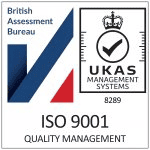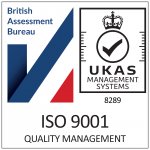

Network Rail wished to undertake First in Class and Driver Confidence running of ETCS enabled vehicles at the RIDC Melton (RIDCM) test track, whilst leveraging the laboratory/technical assets available at the ERTMS National Integration Facility (ENIF).
ETCS lineside and laboratory assets are being supplied by INFRASIG in order to enable testing at RIDC. INFRASIG requested Vertex to utilise their background knowledge of ENIF Operations (Vertex having supplied the Safety Case to enable ENIF Operations on the Hertford Loop and subsequent amendments to enable L3 Hybrid, COMPASS and multiple-vehicle operations) in order to demonstrate safe operation of demonstrations at RIDCM whilst ‘controlled’ from ENIF.

Vertex provided a Safety Case Addendum to INFRASIG, in order to enable testing to be conducted from ENIF, with vehicles operating on RIDCM infrastructure. This Safety Case Addendum was submitted to a NR Safety Review Panel (SRP) in order to gain approval for ETCS testing to commence at RIDC.
Vertex employed the following competencies during these works:
Vertex utilised its extensive knowledge of the existing ENIF suite of safety documents in order to minimise the amount of rework required. This included interrogating the existing Hazard Log in order to extract relevant hazards.
One New Change,
Floor 2, London,
EC4M 9AF, United Kingdom
T: +44 (0)20 7688 2828
E: enquiries@vertex-se.com
285 Madison Avenue
Suite 2200, New York
NY 10017, USA
T: +1 212-370-7319
E: enquiries@vertex-se.com
One Wharf Lane
Level 19, 171 Sussex Street
NSW 2000, Australia
T: +61 (0) 2 9252 7623
E: enquiries@vertex-se.com
Vertex Systems Engineering is the trading name of AMCL Systems Engineering Ltd.
A Turner & Townsend Company. Registered in the UK, Number: 04440268
© Copyright 2024 Vertex Systems Engineering. All Rights Reserved.



